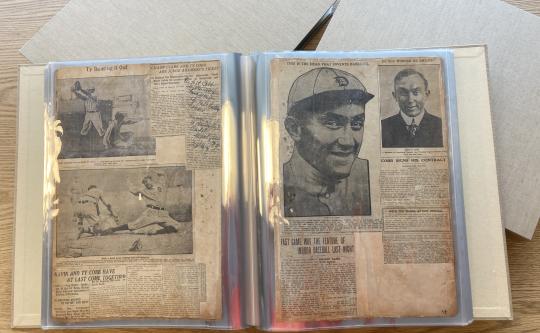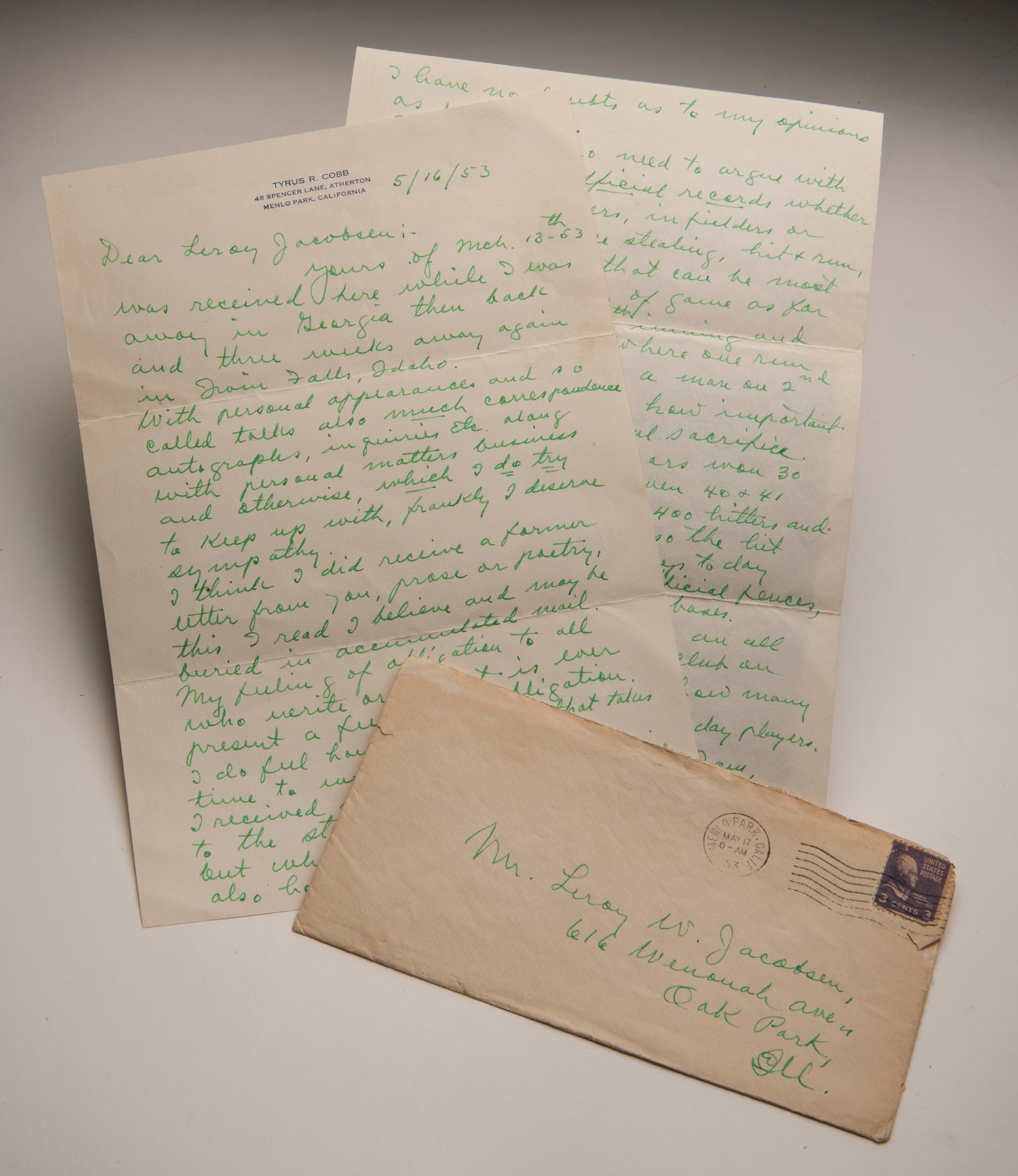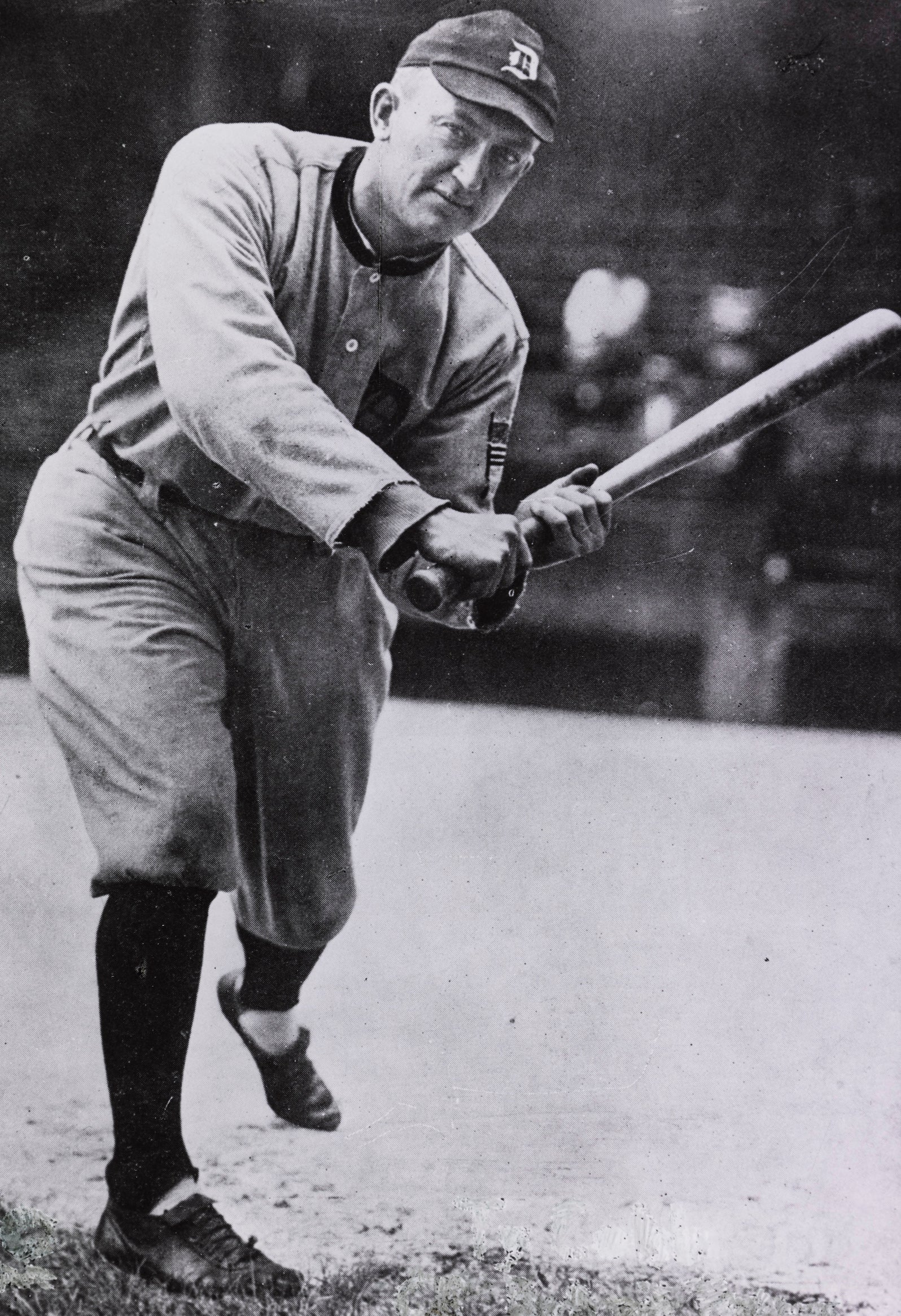- Home
- Our Stories
- Family affair: Ty Cobb’s granddaughter helps preserve Hall of Famer’s legacy
Family affair: Ty Cobb’s granddaughter helps preserve Hall of Famer’s legacy
The National Baseball Hall of Fame and Museum’s collection includes more than just baseballs, gloves and bats.
To best record and share as much of baseball history as possible, the Museum is also home to a number of players’ personal effects. Included in the Library’s vast collection are three volumes of Ty Cobb’s family scrapbooks.
When the Museum first opened, Cobb was one of the first to donate items from his personal collection to be preserved in Cooperstown.
Created in the early 1900s by his wife Charlie, the scrapbooks tell us more about the person behind Ty Cobb, the baseball player. They include family photographs, telegrams and newspaper clippings – items that help detail the larger story of American history through a baseball connection.
Be A Part of Something Greater
There are a few ways our supporters stay involved, from membership and mission support to golf and donor experiences. The greatest moments in baseball history can’t be preserved without your help. Join us today.
One of the three volumes was recently returned to the Museum after undergoing conservation work. Another one previously underwent conservation treatment.
“Conserving the scrapbook was with the interest of preserving baseball history, and that was my family’s main reason for stepping up,” said Cobb’s granddaughter Cynthia, who funded the recent conservation efforts. “It was showing signs of deterioration and it became apparent that it was time to act.”
The scrapbooks are more than a century old, and time was taking its toll. Some of the photos inside were becoming discolored and items were coming loose from the pages. Conservation work was done to treat the pages and organize them in a way that will prevent further damage while still preserving the original items.
As part of the Museum’s mission to preserve artifacts in perpetuity, some items that are in need of conservation are sent to specialists to be treated. In the past, this has included baseball equipment such as caps and gloves along with documents and other items that all play a role in telling the story of baseball’s history.
“It is important to preserve the history of the era in which he played,” Cynthia Cobb said. “The scrapbooks are a window into that era and now that it has been conserved, will serve to be a beneficial resource for the public.”
Items like these allow the Museum’s Library to document more than just the on-field history of baseball. And the conservation efforts will enable future researchers to access the information and continue sharing the stories and learning from the past.
“The conservation of the Ty Cobb scrapbooks ensures that the materials will be available for generations to come,” said Kelli Bogan, the Museum’s Director of Archives and Digital Assets.
“Created by Cobb’s family, the scrapbooks both create a window into how his family documented his journey through baseball and capture the stories as they unfolded in real time. The stabilization and cleaning of the scrapbooks allows them to be handled safely in the Giamatti Research Center and also allows us to make them available through our digital collections portal for those who are unable to visit the Museum in person.”
With information like this not easily accessible from other sources, it remains a key part of the Museum’s work to see that they are protected for future generations.
“It shows Ty Cobb as not just a ball player but also a family man,” Cynthia Cobb said. “It also shows how important his family was to him. And let's face it, it's not easy being a ballplayer on the road, not to mention back in his day taking trains and the accommodations. It offers a glimpse into how dear his family was, after a hard life on the road.”
Arielle Gordon is the Digital Content Specialist at the National Baseball Hall of Fame and Museum





